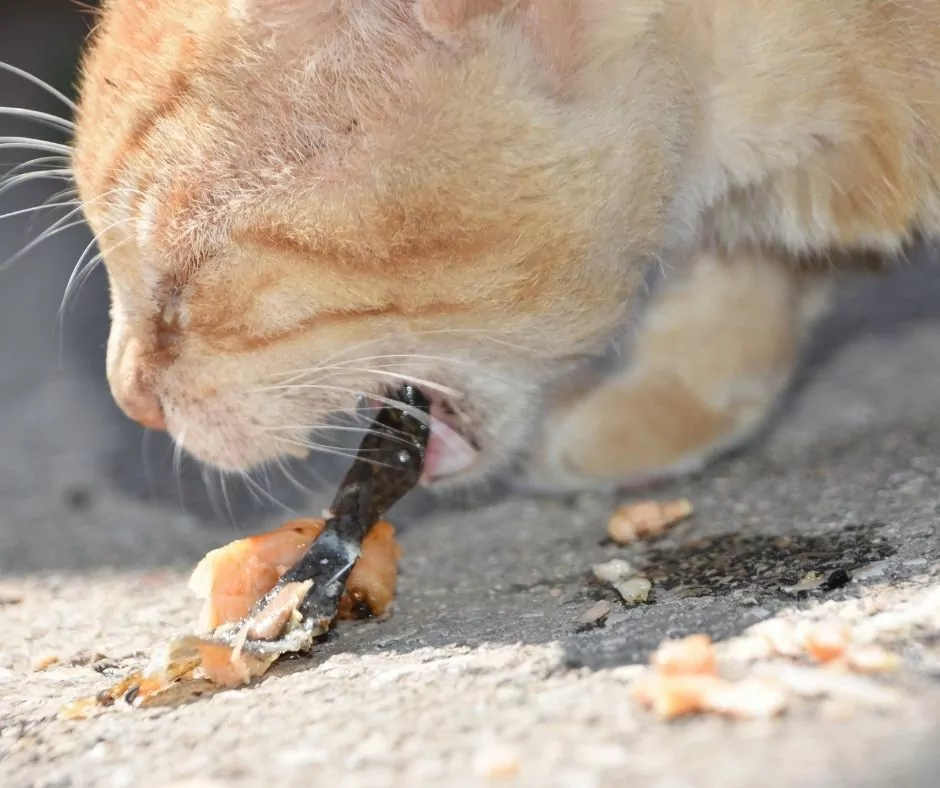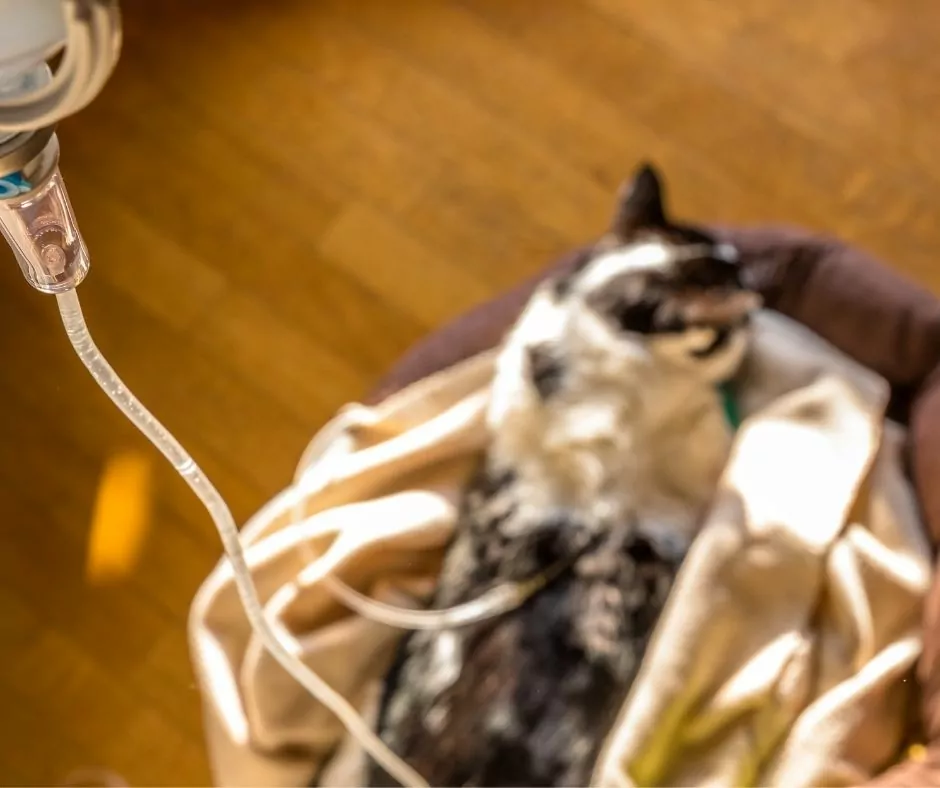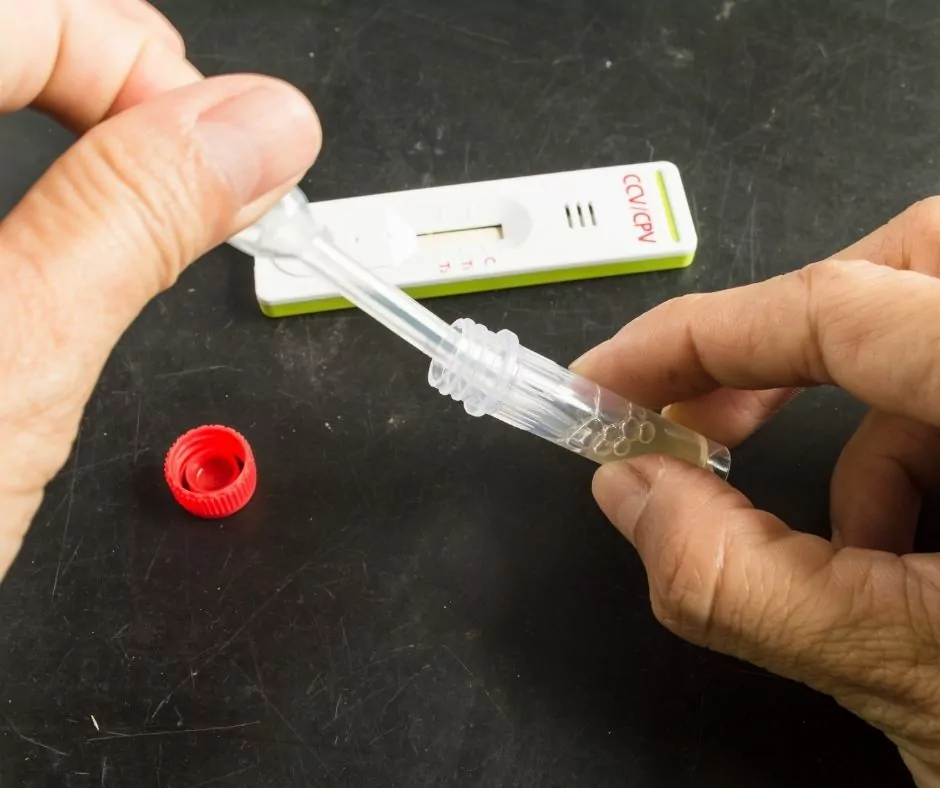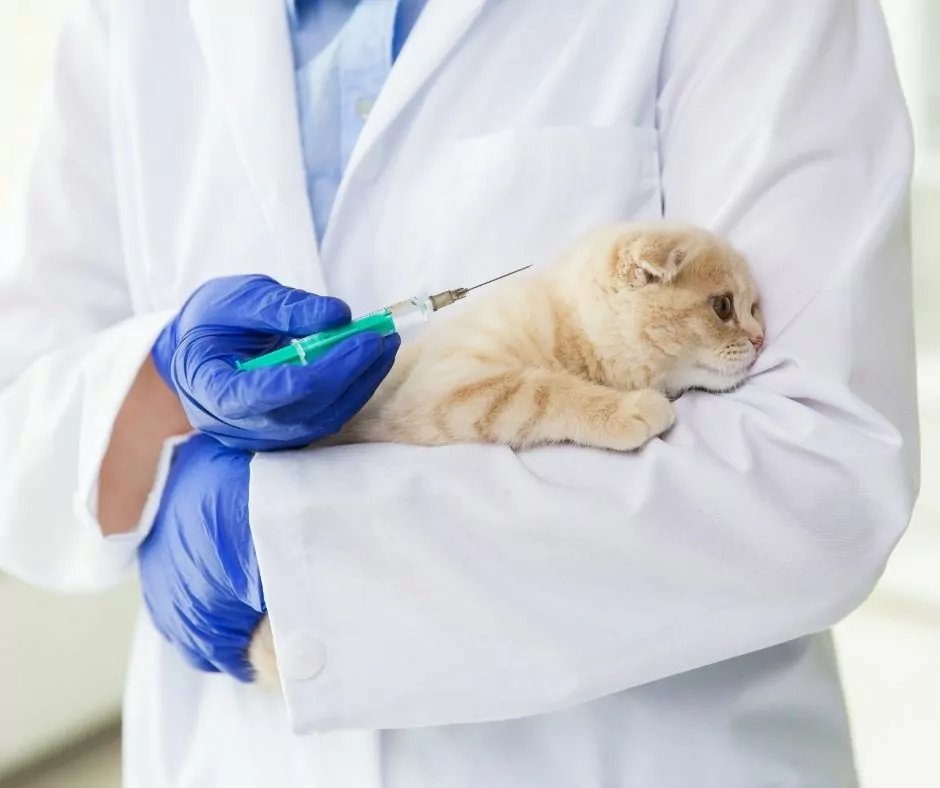What is Feline Panleukopenia?
Feline Panleukopenia Virus (FPV), sometimes called Feline Distemper, is a disease in cats and kittens caused by the highly contagious Feline Parvovirus. The virus affects rapidly dividing cells in the body. Thus the most affected organs are the bone marrow (where red and white blood cells are made) and the lining of the gut.

It is common in unvaccinated cats and kittens and can be fatal. Feline Distemper in kittens is most common in those aged between two to six months as they no longer have immunity from their mothers and their own immune systems are developing.
Having other diseases or parasites predisposes kittens to FPV. Other cats that are at higher risk include pregnant and immune-compromised adults. Infections in pregnant cats will also affect unborn kittens.
Distemper in cats is a different disease entirely from Canine Distemper even though they share the same name.
The 14 Most Common Symptoms of Feline Distemper (Clinical Signs)
- Fever: One of the first signs of FPV is a fever. Your cat may feel warm to the touch, but fevers can only be confirmed by a thermometer.
- Inappetance: This is another early sign of infection. Cats infected with feline parvovirus will often lose their appetite as their body is under attack and their immune system is compromised.
- Lethargy: The third early sign of infection with Feline Panleukopenia Virus is lethargy. Cats will be weak and not want to play, often appearing like they are sleeping all day.
- Diarrhea and vomiting occur next as the disease begins to affect the cells that line the gastrointestinal system preventing normal digestion of food. You may see blood in the diarrhea, and it is usually very liquid.

- Sudden death: In some cases, young cats can die suddenly within 12 hours of showing lethargy and depression due to profound septic shock, dehydration, and low body temperatures. You may not have seen any diarrhea or vomiting yet.
- Dehydration: you may notice that your cat’s gums are sticky to touch, they don’t have the usual elasticity in their skin, or their eyes look sunken in. These are all signs of dehydration which is caused by the vomiting and diarrhea cats experience when infected with FPV.
- Rough coat may be seen as the cat’s body is affected.
- Difficulty walking is common in sick cats as they are weak and dehydrated
- Low numbers of white blood cells: The bone marrow is attacked by the virus, as this is where white blood cells are made. Damage to this tissue will rapidly reduce numbers circulating in the blood. Low white blood cell numbers show up on blood tests.
- Secondary infections: With low numbers of white blood cells (which are an essential defense mechanism in the immune system), cats and kittens infected with FPV may develop secondary infections such as upper respiratory disease, skin disease, or infections in the blood.
- Anemia: When a cat or kitten is infected with FPV and has large amounts of blood coming out with the diarrhea, this can lead to low numbers of red blood cells, which make up blood. This can lead to anemia and can also be seen on blood tests.
- High heart rates will sometimes be observed in infected cats due to dehydration.
- Low blood pressure can also be caused by dehydration in cats infected with FPV.
- Less urine production due to dehydration may be observed.
Can Humans Get Feline Distemper?
No, humans can not get infected with Feline Panleukopenia. It is specific to cats. There are human parvoviruses, however, which can infect people, but that information is beyond the scope of this article.
Causes of Feline Distemper
Feline Distemper is caused by a Parvovirus which is a genus (group) of viruses that infect a wide range of mammals. The Parvovirus that infects cats is called Feline Panleukopenia Virus (FPV).
Cats and kittens are infected by the Feline Panleukopenia Virus when they ingest the virus either from feces produced by an infected cat or from eating/licking something in the environment which has the virus present on it.

Infected cats shed large numbers of the virus in the feces, and the virus is very hardy, being able to survive up to two years in the environment.
Cats and kittens in shelters or in environments with large numbers of unvaccinated cats are at the most risk.
Ordinary household disinfectants will not kill the virus. Some chemicals will kill the virus. Bleach at a dilution of 1:30 should be used to clean any surfaces where any infected animal has been.
It appears there is a seasonality with FPV in cats as there are more cases seen in the spring months when kittens are in their highest numbers.
There is no evidence that certain breeds are more susceptible to becoming infected with FPV.
Diagnosing FPV
Feline Panleukopenia Virus will initially be suspected when history is collected. Any sick kittens or cats that are unvaccinated should be considered potentially infected, particularly if the animal has signs of vomiting or diarrhea.
Blood tests will show low levels of all white blood cells, signs of dehydration, and potentially anemia. There is a specific test that can be run, which tests for FPV, diarrhea from the affected cat will be positive for the virus in infected cats.
Available Treatment Options
There is no specific antiviral drug to treat FPV, instead infected cats need to be supported as their body fights the infection. Infections with FPV require aggressive treatment, often involving extended hospital stays.
The mainstay of treatment involves IV fluids to correct dehydration and antibiotics to protect the cat while its immune system is low. Treatment at home is not recommended as the level of care required will be challenging to meet and will affect the prognosis of this disease.

Careful isolation is required for infected cats both to prevent other cats from becoming infected by FPV but also to protect the infected cat from potential infections as their immune system is so low even a mild cat flu brought in from another cat could be very dangerous.
Other drugs that are commonly administered include anti-nausea medicine, various types of fluids to stabilize the animal, pain medications, anti-parasitic medications, and nutritional support.
If an animal isn’t eating, a feeding tube might need to be placed. Occasionally blood transfusions can be performed if the anemia is severe. Repeated blood tests may be required to monitor the levels of red and white blood cells, protein and electrolyte levels.
The Curability and Prognosis After a Cat has Contracted FPV
The prognosis for a cat with FPV can vary widely based on a few factors, including immune status, age, any other diseases or infections, and how aggressive the treatment is.
A young kitten who is not able to get adequate medical attention will have a much lower chance of surviving Feline Panleukopenia compared with an adult cat who can be hospitalized and monitored closely.
In dogs with Parvovirus, the survival rate can vary from 10% to 90% showing how differently this disease can affect animals. If a cat or kitten does survive the infection of FPV, then they will likely have lifelong immunity.

However, depending on how severe the disease was, it may continue to have effects even after the initial infection. If a bacterial infection was able to infect the animal secondarily, then it can get into the bloodstream and travel to different organs leading to skin necrosis, bacterial polyarthritis, and discospondylitis.
This is where the bacteria affects the skin, joints, and spine. The consequences of this can vary in severity. If a mother cat is infected with FPV, the unborn kittens can be born with permanent brain damage.
The cerebellum will be affected, which is part of the brain which helps with coordination and walking. Animals with cerebellar hypoplasia (small cerebellum) will have an uncoordinated gait and may have difficulty walking.
Otherwise, they are normal, and the condition does not progress. Cerebellar hypoplasia can also occur in very young kittens that become infected with FPV.
The Difference Between Canine and Feline Distemper
It is important to realize that the colloquial name “Feline Distemper” is a misnomer and the disease has nothing to do with Canine Distemper. They are different diseases and different viruses.
Feline Distemper is actually much more related to Canine Parvovirus, which is caused by the Canine Parvovirus (CPV-2). It is best to think of Feline Distemper as Feline Panleukopenia or Feline Parvovirus as these make a lot more sense when thinking of it as a disease.
The Likelihood of Your Cat Getting Feline Distemper
The good news is that cats can be vaccinated against Feline Distemper and the vaccines are very effective at preventing disease. Once a cat is fully vaccinated, the risk of becoming infected by the Feline Panleukopenia Virus is low.
A cat or kitten that isn’t vaccinated is at high risk of becoming infected, so it is always worth vaccinating. Kittens are most at risk as they are often too young to have completed their vaccine course.
Typically kittens require vaccines three to four weeks apart, then from six to eight weeks until 16 weeks old. It is vital that during this time, they are kept inside and away from any unvaccinated cats.

Adult cats with no vaccine history typically require two vaccines three to four weeks apart. Regular boosters are also required to stimulate the cat’s immune system and ensure adequate protective antibodies are present.
If a vaccinated cat were to come into contact with FPV, the antibodies would help to fight off the infection before it could take hold. It is also essential to make sure any cat that is going to be used for breeding is fully vaccinated before becoming pregnant, as the antibodies will be passed onto the kittens in milk and help to protect them until they are vaccinated.
Typically pregnant cats can’t be vaccinated, so it’s essential to do it prior to breeding. Even indoor cats can become infected with FPV, so it is recommended they are also vaccinated.
Always consult with your veterinarian for advice on vaccinations that are appropriate for your pet.
If you found this article insightful, you can also read our article on Distemper in Dogs.
